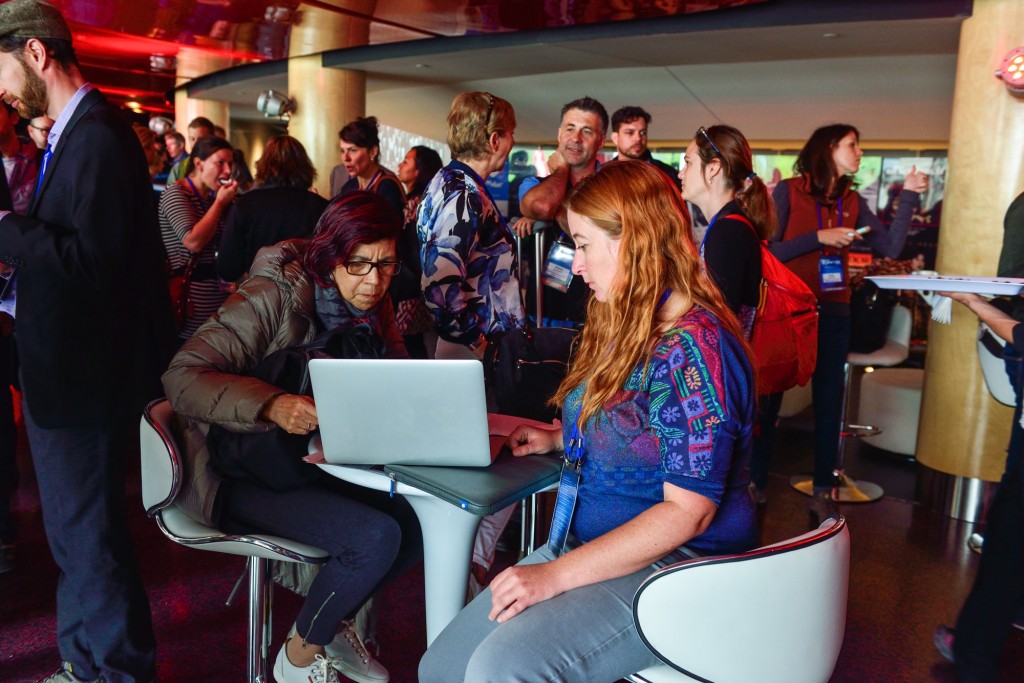By Norie Quintos
One of the most surprising things I hear at industry events like the Adventure Travel World Summit is that tour operators and destination marketers are nervous to talk to me and other members of the media. “I don’t know what to say,” is the common refrain. Behind that sentiment is often a lack of understanding of what journalists do, how we do it and a residual awe at practitioners of the still potent magic art of the written word (or captured image).

Let’s fix that! One of ATTA’s great benefits is bringing the writers and editors who cover adventure travel into your orbit through formal pitching sessions and informal networking events. Maybe you’ve got a dozen speed dates scheduled with bloggers at an event or you’re preparing to walk into a room with 50 media sitting at big round tables like at the Summit. Or perhaps you’ll find a travel editor in front of you at the lunch line, balancing a drink, plate and smartphone. I’ve been on the other side of thousands of such interactions, and here are 7 tips to get the relationship off to a good start.
Meet the Media
Coming to ATWS in Alaska? Meet writers like Norie Quintos at MediaConnect on September 21.
2) Just the highlights, please: The reason media people always look like they’re in a hurry is that they’re in a hurry. The digital disruption of the media industry has resulted in layoffs, pay cuts and piled-on responsibilities for staff and freelancers (often made to write, blog, shoot video, Instagram and Facebook Live at the same time). The time they used to have for finding new stories has shrunk. Condense your pitches to bullet points. Give the journalist a chance to ask questions. And remember, you can always follow up with an email.
3) Think in threes: One cool thing is an outlier. Two is meh. Three is a trend. If your tour company or destination is doing something interesting, the idea can nevertheless be a tough sell. Journalists like to identify trends. Do them a favor and find similar or complementary examples, perhaps even from your competitor. Your idea will have a better chance of seeing ink.
4) Beyond the 10-page feature: Despite the decline of print publications, the holy grail remains a long narrative feature in a magazine. You’ll improve your chances of coverage if you also seek out more common types of articles: service stories, interviews, roundups (or “listicles”) or awards.
5) It’s not enough that you’re the best: You’ll need to articulate why and how to the media. Give solid, specific examples of how your tour, lodge, destination is unique and different.
6) Make your own content: One consequence of the digital revolution is that traditional media are no longer the sole arbiters and gate-keepers of information. Your company can publish your own blog, write your own articles and push your own message out.
7) Help where you need it: With journalists chronically overworked and a ratio of about 5 PR professionals for every media person, you face an uphill battle doing your own media outreach. In recent years, the communications industry has itself adapted to changing needs, incorporating or partnering with a new breed of experts who can be tapped to help navigate the new landscape: brainstorm story ideas, launch campaigns, target media and develop a content strategy.
If nothing else, remember that you are building relationships. And relationships take time and effort. That initial four-minute meeting may not yield much immediately, but if you’ve made a good impression, it’s just the beginning.
Norie Quintos is a member of the ATTA’s Adventure Media Advisory Group and a communications and content consultant and an editor/writer, helping travel companies and destinations tell their stories. She is an editor at large for National Geographic Travel Media and the former executive editor of National Geographic Traveler. Follow her on Instagram and Twitter @noriecicerone and check out her website at www.noriequintos.com.
